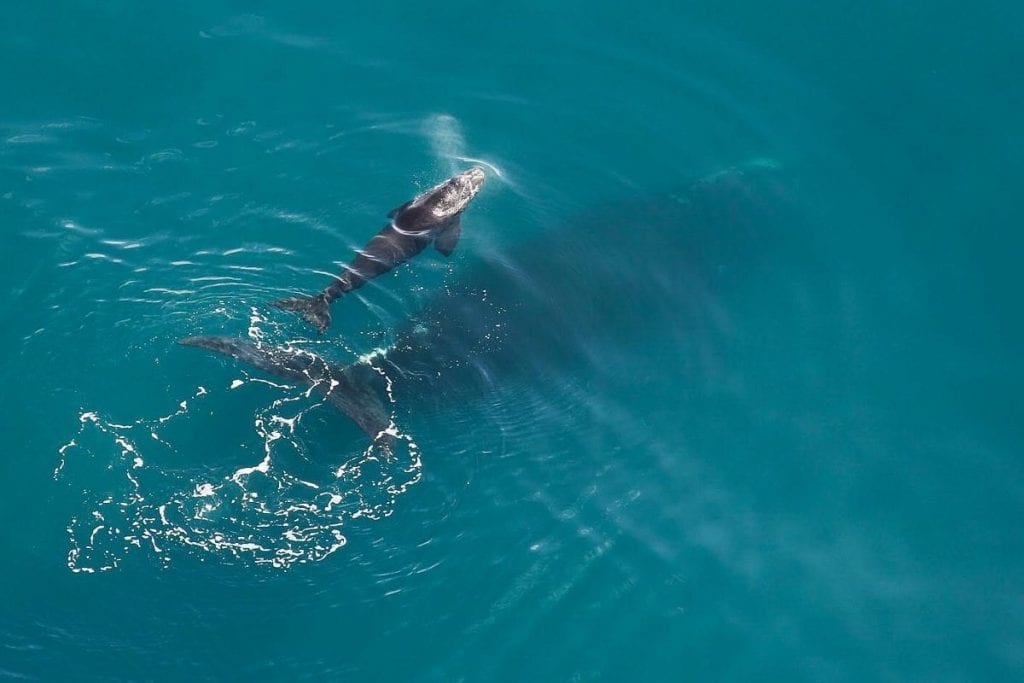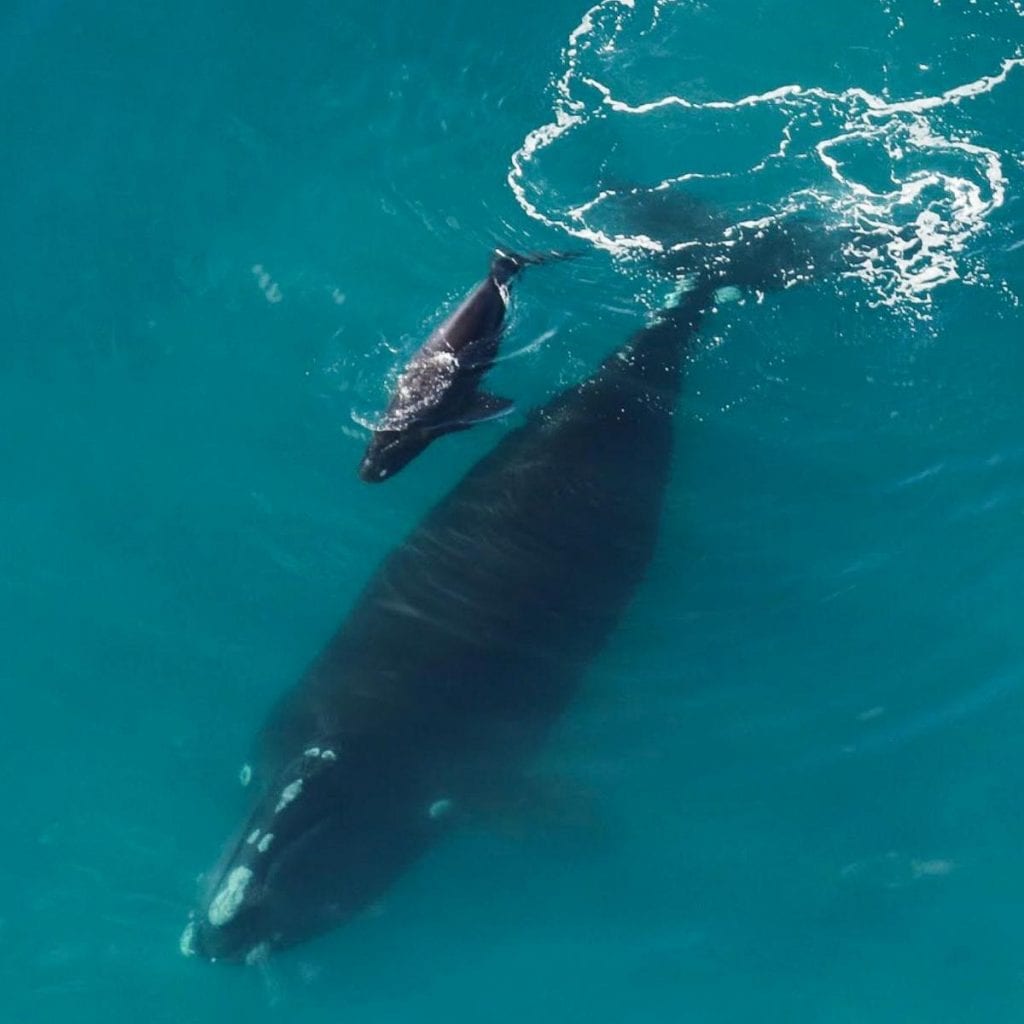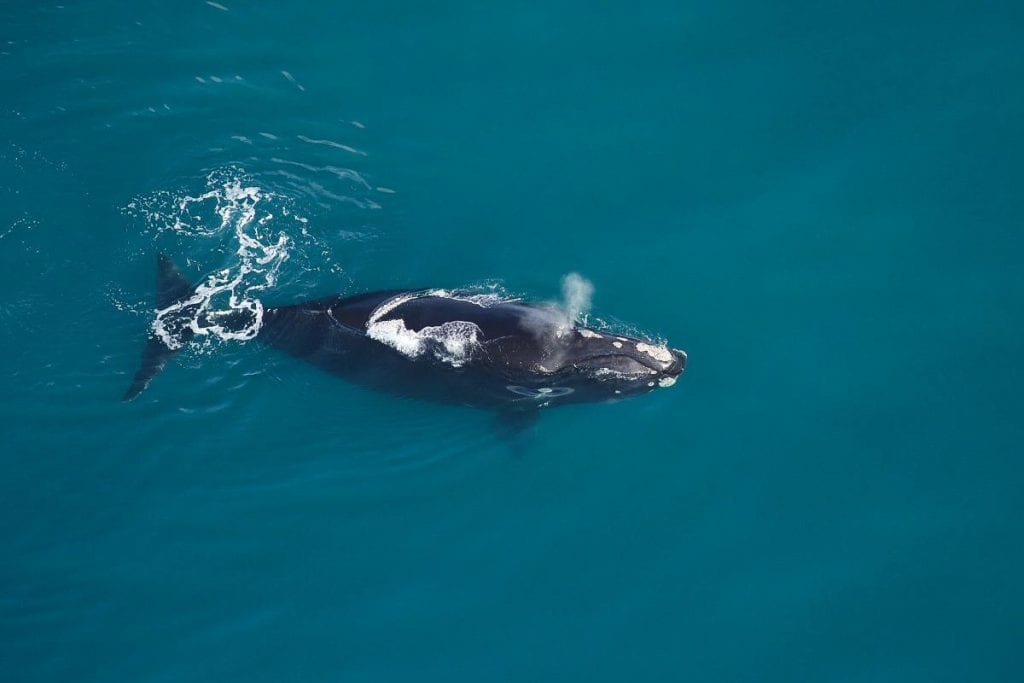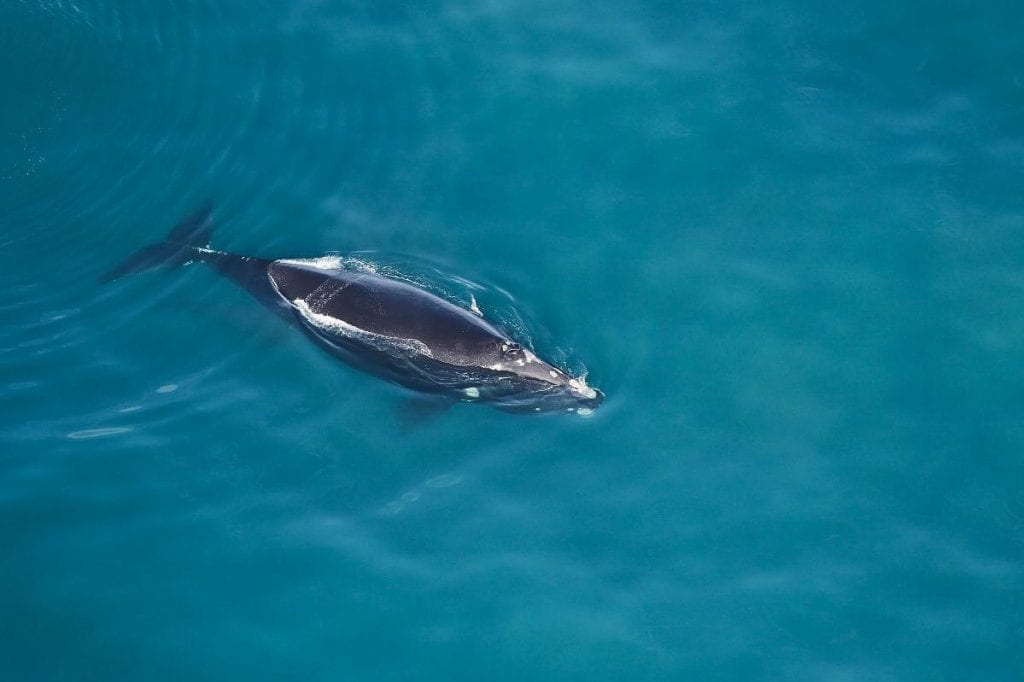
Aerial survey teams with Clearwater Marine Aquarium spotted the mother-calf pair
On Monday, December 16, 2019, an aerial surveillance team from Clearwater Marine Aquarium (CMA) identified the first North Atlantic right whale mom/calf pair of the season approximately 30 miles east of Sapelo Island, off the coast of Georgia. With just over 400 remaining, this finding is significant for the endangered species. Scientists identified the mom by her number in the New England Aquarium Right Whale catalog as #3560. She is known to biologists and is a first-time mom, born in 2005.

UPDATE: Second Calf Spotted Two Weeks Later
Two weeks later, on Monday, December 30, the same aerial survey team identified the second mom/calf pair of the season off the coast of St. Simon’s Island, Georgia. Scientists from the New England Aquarium confirmed mom was Catalog #1612 – a mom for the 7th time.
Important moment for one of the world’s most endangered whales
The North Atlantic right whale (Eubalaena glacialis) is a federally-protected endangered species under the Endangered Species Act and the Marine Mammal Protection Act. Recovery has been steady but slow for various reasons including a slow reproduction rate, and threats from entanglement in fishing gear and collisions with large ships.

Named the right whale by whalers as the “right whale” to hunt because of their likelihood to be close to shore and buoyant abundance of blubber, the species recovery is dependent upon the protection of each remaining whale. It is illegal to be within 500 yards of a right whale and violations can result in civil or criminal penalties with fines up to $100,000. There are also several areas along the East Coast where NOAA requires vessels 65 feet or longer to slow down to 10 knots or less during times of the year when right whales are likely to be in the areas in large numbers.
Right Whale Conservation Efforts
The Clearwater Marine Aquarium Right Whale Conservation Program actively monitors right whales during calving season through aerial surveys designed to mitigate ship collisions and document reproductive rates; provides scientific data to marine decision makers on conserving the species; provides assistance during disentanglement events, carcass recovery and necropsies; assists with the collection of genetic material; and participates in tagging projects.

Minimizing Ship Collisions With Whales During Calving Season
Additionally, our researchers has been active on the management and conservation side of the issue through past participation in the NOAA Large Whale Take Reduction Team and distribution of our long-term monitoring data to management agencies for help in determining appropriate boundaries of critical habitats, speed zones, and other protection measures.
Our main right whale research project consists of right whale aerial surveys in the Southeastern U.S. The winter calving grounds off this area were first designated as critical habitats for right whales in 1994 and then revised in 2016.
CMA right whale staff are world-class scientists who have been involved in right whale research and conservation activities for more than twenty years.
You can learn more about CMA’s right whale research efforts and help protect right whales by donating to this conservation program.
Contributed by Melanie White, North Atlantic Right Whale Conservation Project Manager, Research Biologist. Photographs collected under NOAA research permit # 20556-01.